Muscadine Wreath for the Farmer Florist
Muscadines are native to Mississippi and grow wild throughout the state. Naturally adaptable, resistant to insects and disease, and boasting long vine life, muscadines are a great addition for farmer florist production systems.
Production
Muscadines thrive in fertile, well-drained, sandy-loam soils. Good aeration and slightly acidic soil will promote healthy muscadine vines. Muscadines are well-adapted to the relatively warm winters of the South and can withstand the high levels of precipitation common in the region. However, in times of drought, consistent irrigation is necessary. Drip irrigation is recommended for supplemental moisture.
Muscadines are grown on trellises. For small production areas, a simple, single horizontal wire attached at 5½ feet above the ground to posts spaced 15–20 feet apart is sufficient. Muscadines may be planted from November through February. Space plants 20
feet apart to allow the main arms to grow 7½–10 feet horizontally in each direction.
Recommended spacing between rows is at least 12 feet.
Begin training the vines when the shoots are approximately 1 foot long. Choose the strongest shoot and remove the rest. Tie the shoot to a stake to ensure the vine grows upright toward the horizontal wire. When the shoot reaches the wire (usually within one season), pinch out the terminal, which will force two to three lateral buds.
Select the two strongest laterals and tie them loosely to the wire, one on each side of the main shoot.
While regular pruning encourages fruit production, it is not necessary for vine production. If vines are not pruned annually, fruit production is poor.
Muscadines require fertilization on an annual basis. Apply ½ pound (1 cup) 8-8-8 fertilizer per plant in early spring of the first growing season, about 6 weeks after planting. Broadcast the fertilizer in a 2-foot band around the base of the plant, making sure to keep it at least 6 inches away from the trunk. Side-dress with ⅛ pound of ammonium nitrate per vine 6 weeks after the last application in late May and early July of the first growing season. Fertilizing three times per year after the first year helps maintain vine vigor and health.
Annual soil testing is recommended to ensure proper nutrition in the vineyard.
Muscadines are naturally resistant to most insect and disease issues. However, application of pesticides may occasionally be necessary. When employing chemical measures, it is the user’s responsibility to follow label instructions. Herbicide labels can be obtained from www.cdms.net and www.greenbook.net. You should review labels before purchasing a product. Some labels provide scientific names and common names of plants, some list common names, and some provide a combination. Registration of chemicals and their approved uses changes periodically.
Harvest and Handling
While fruit may be harvested in late summer, vines should be harvested beginning in late fall. Cut long lengths of vine to work with (at least 3 feet). Remove all leaves unless the dried leaves will enhance your final design. Curly tendrils may be left intact to provide visual interest. Many muscadine growers harvest vines only to compost or burn them. It may be best for wreath producers to partner with muscadine growers to remove pruned vines, then make them into wreaths. This can be done on the farm, or vines can be hauled to a wreathmaking facility.
Cultivar Recommendations
Any muscadine vine is suitable for farmer florists. However, if you are also interested in fruit production, consider the following:
Black Beauty — Purple, crunchy skin; large size; excellent flavor; female; good yields; extended harvest; excellent vigor; excellent for fresh fruit.
Carlos — Bronze; tough skin; medium size; good flavor; self-fertile; excellent for juice, jelly, and wine; high yields.
Ison — Purple; medium to large size; strong muscadine flavor; medium-tough skin; self-fertile; uniform ripening; good pollinizer; good yields; good for fresh fruit.
Noble — Small; purple; good flavor; tough skin; self-fertile; excellent for juice, wine, and jelly.
Southern Home — Small, reddish berries; thin skins; more neutral flavor; seeded; good for fresh fruit, juice, wine; self-fertile; attractive ornamental leaves.
Note: Muscadines have vines that produce imperfect flowers (only female flower parts) and vines that produce perfect flowers (male and female flower parts). One perfect-flowered vine can pollinate eight surrounding imperfect-flowered vines. In a single-row planting, every third vine should be a pollenizer.
Design Applications
Creating a muscadine wreath is quite simple, requiring only the vines themselves, some time, and patience. The following simple method can help you to get started.

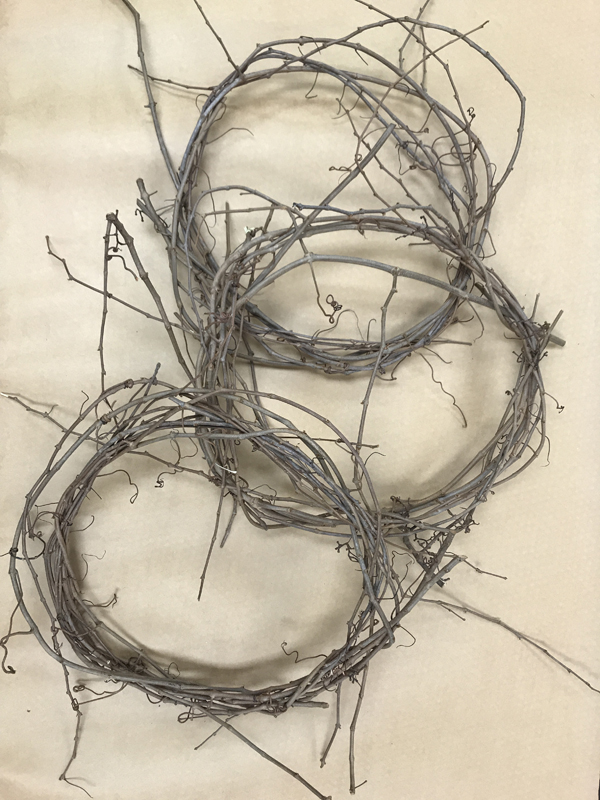
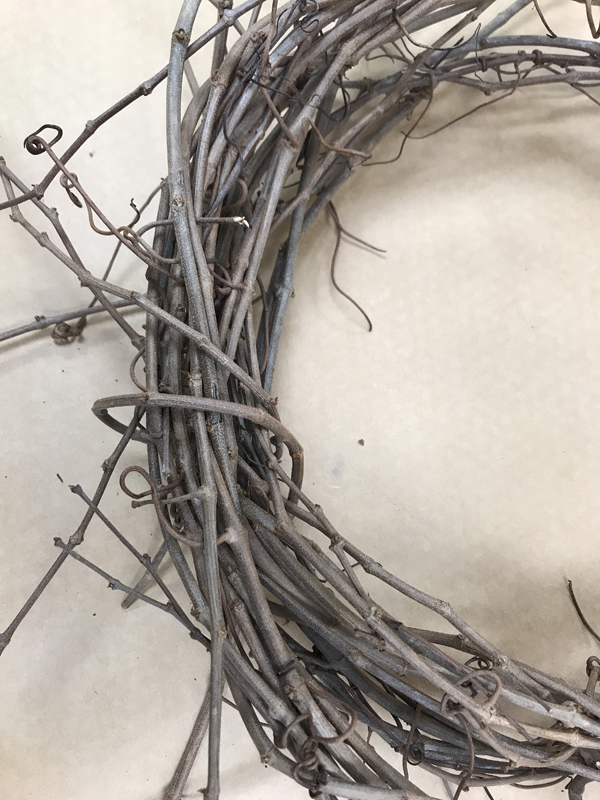
length or two around the stack to hold them in place. Use several of
these spiraling vines to establish a semi-rigid wreath.
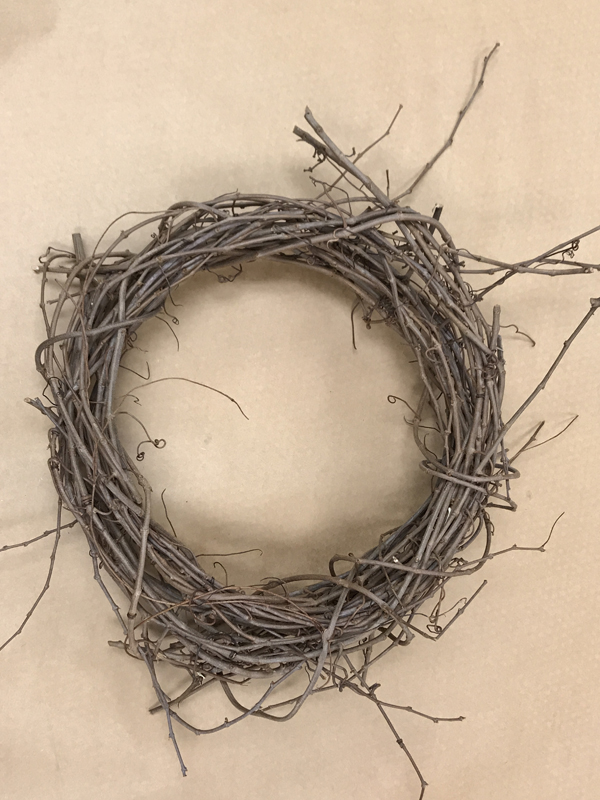
Indeed, it may display renegade stems and a slightly asymmetrical
shape. These give the wreath character, are perfect for adding flowers
and trims, and are a gentle reminder of the Mississippi countryside.
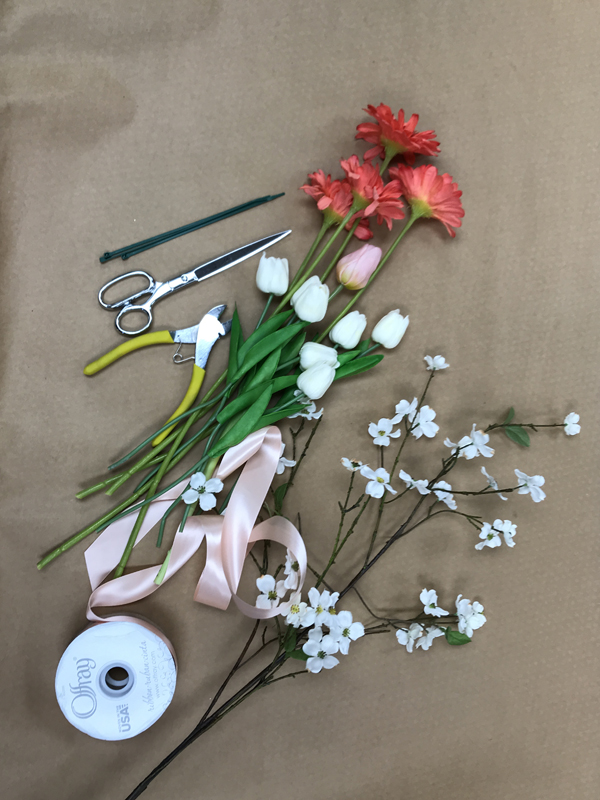
method is to attach a tied cluster of permanent botanical (silk) flowers
to a wreath. Materials include plastic cable ties, coral gerbera daisies,
white/peach tulips, dogwood, and peach ribbon. You will need wire
cutters and ribbon shears for this project.

of the bouquet, and keep the dogwood branches long. They will follow
the curve of the wreath. Bind the stems tightly with a single cable tie.
Note that you can spiral one or two very long stems to appear like
grapevines, but keep this to just a few; otherwise, it calls too much
attention to the frantic-appearing silk flower stems.
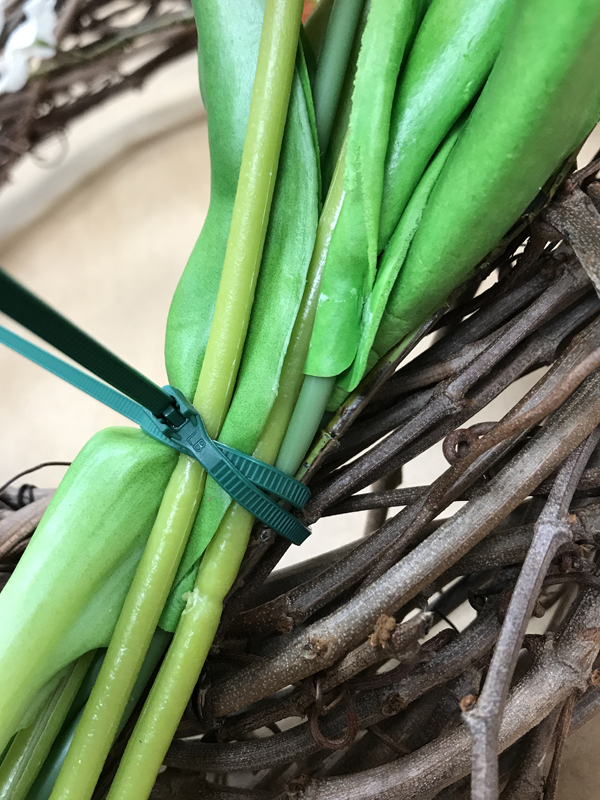
several grapevine stems in the attachment to ensure the design is
secure.
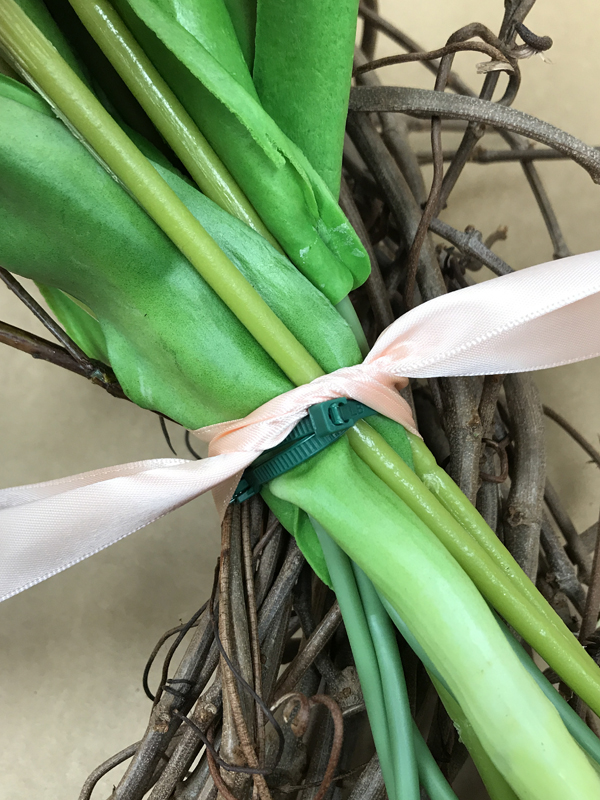
a knot just above the cable tie’s buckle. This will help keep the ribbon
in place without much slipping.
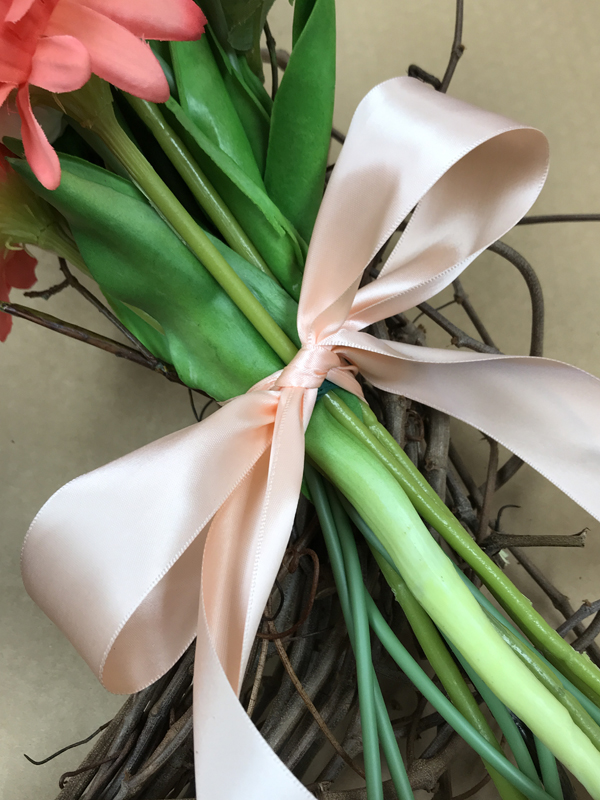
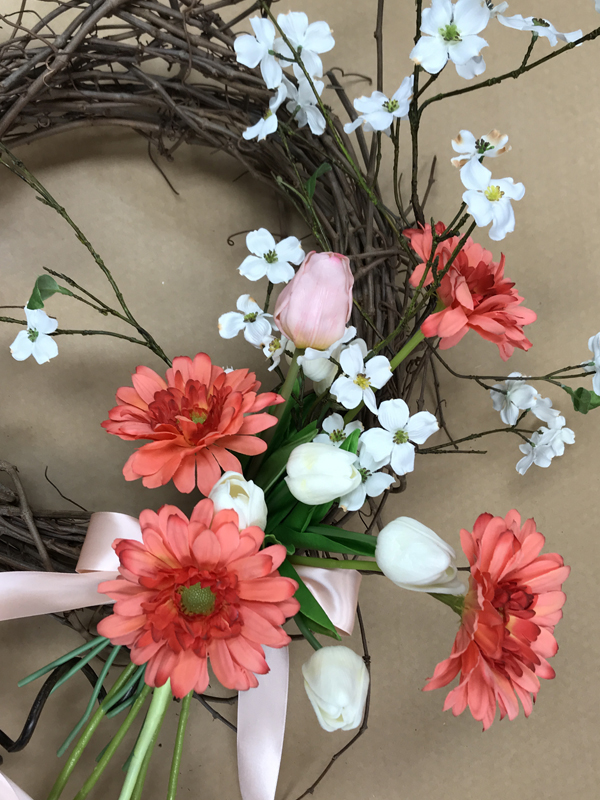
at the focal area to look toward the viewer, while all others radiate
outward toward the top and bottom of the design.
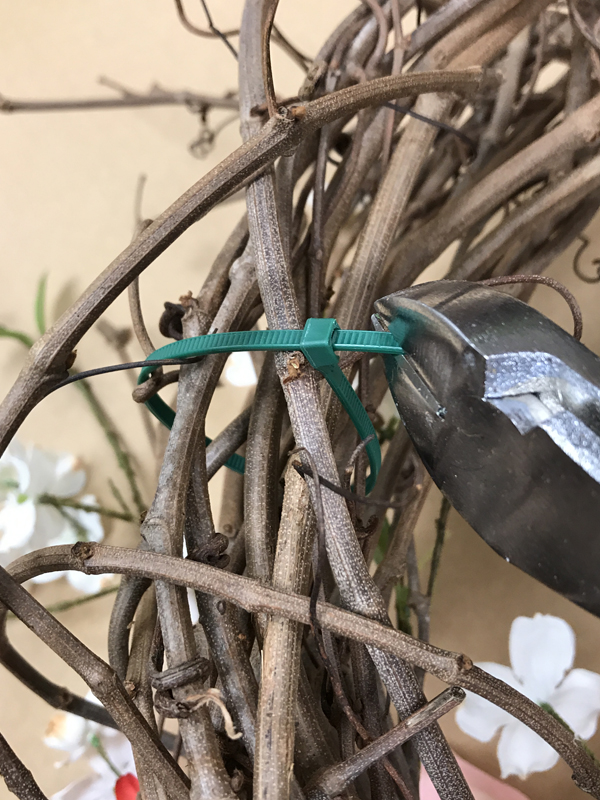
Do not tighten it too much and leave enough loop space for it to hang.
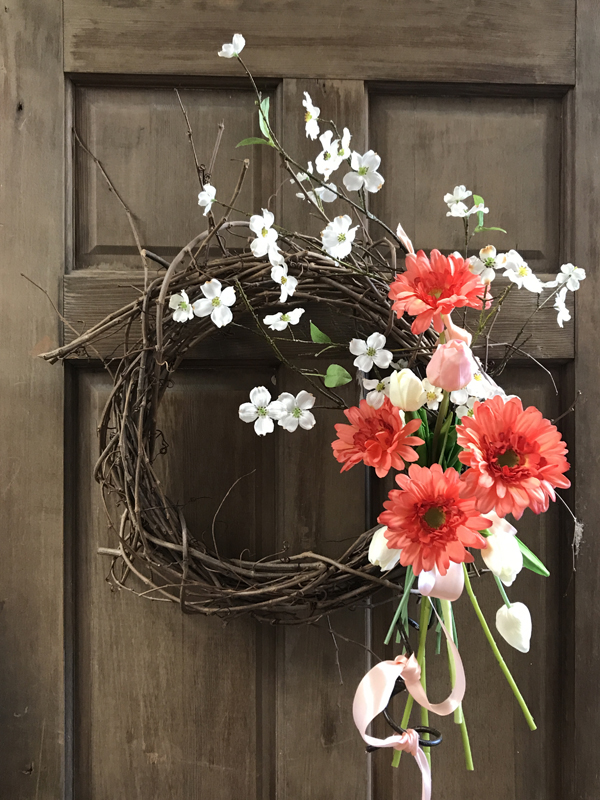
can do. Do not forget to add a price tag to the design. You may find
that it is necessary to make more of these samples because many
customers would rather purchase a finished product.
Reference
Stafne, E. (2018). Fruit and nut review: Muscadines. Mississippi State University Extension Information Sheet 1445.
Publication 3387 (POD-09-19)
By James DelPrince, PhD, Assistant Extension Professor, Ben Posadas, PhD, Associate Extension/Research Professor, Christine Coker, PhD, Associate Extension/Research Professor, and Eric Stafne, PhD, Extension/Research Professor, Coastal Research & Extension Center.
Copyright 2019 by Mississippi State University. All rights reserved. This publication may be copied and distributed without alteration for nonprofit educational purposes provided that credit is given to the Mississippi State University Extension Service.
Produced by Agricultural Communications.
Mississippi State University is an equal opportunity institution. Discrimination in university employment, programs, or activities based on race, color, ethnicity, sex, pregnancy, religion, national origin, disability, age, sexual orientation, genetic information, status as a U.S. veteran, or any other status protected by applicable law is prohibited. Questions about equal opportunity programs or compliance should be directed to the Office of Compliance and Integrity, 56 Morgan Avenue, P.O. 6044, Mississippi State, MS 39762, (662) 325-5839.
Extension Service of Mississippi State University, cooperating with U.S. Department of Agriculture. Published in furtherance of Acts of Congress, May 8 and June 30, 1914. GARY B. JACKSON, Director
The Mississippi State University Extension Service is working to ensure all web content is accessible to all users. If you need assistance accessing any of our content, please email the webteam or call 662-325-2262.





